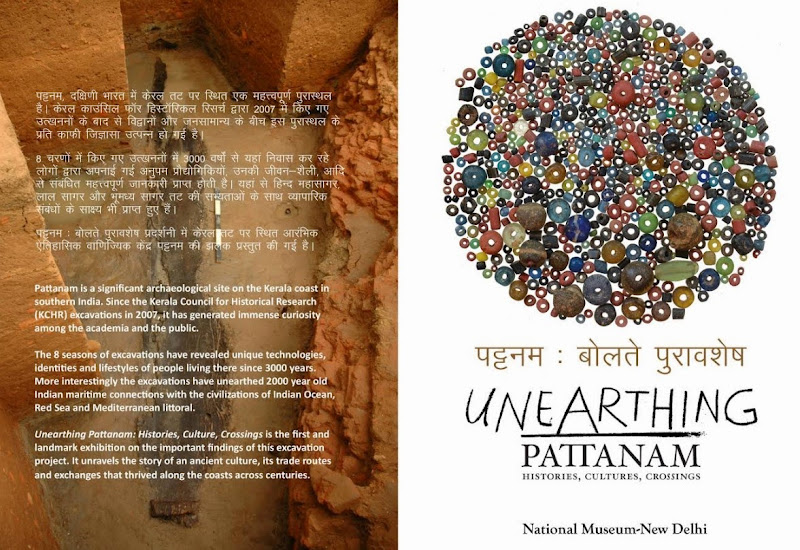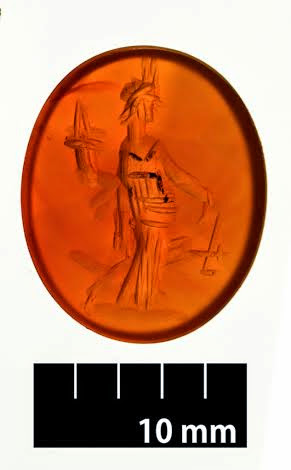The National Museum is ready to take its visitors on a roller coaster ride to three millennia ago when it unveils this Friday an unprecedented exhibition based on archaeological findings on the ancient Spice Route unearthed through eight years of excavations in Kerala.

Conceptualised by National Museum Director-General Dr Venu Vasudevan, who as a former Tourism and Culture Secretary of Kerala was instrumental in laying the foundation for reinventing the Spice Route as a cultural and commercial instrument for the modern times, the exhibition will run for over a month.
The exhibition, put together by the Kerala Council of Historical Research (KCHR) at the initiative of the National Museum, will provide a first time glimpse into the seminar research on the existence of Muziris, a flourishing port city on the Kerala coast that was the centre of global spice trade more than 2,000 years ago before it mysteriously disappeared in the 14th century.
“This is a significant exhibition, which is interesting at many levels,” said Dr Venu. “On the one hand, it gives an opportunity to the academic community to critically examine what is a very important archaeological project undertaken in India in recent times. At the same time, it is also a lively way of showcasing the signs of archaeology before a young audience,” he added.

According to the National Museum Director General, the exhibition will be a catalyst in analyzing the implication of the findings at Pattanam and kick-start a critical discussion on a range of topics such as the maritime history of the Indian Subcontinent, the question of the mysterious Muziris, the trade connections India had with the rest of the world.
“These vital topics could be examined, debated and discussed by the academics. But at the same time, this is our humble attempt to showcase archaeology, its possibilities and interesting connections with other disciplines before an audience who will not normally get an opportunity to understand this,” Dr Venu said.
“Museums are an important academic and cultural space where important thoughts and ideas can be presented and be part of the public discourse,” he explained, adding the exhibition was an attempt to take archaeology to the public by establishing visual connections to a digging happening somewhere in the country.
“A museum has to go beyond putting some object on display,” Dr Venu said. “A museum has the mandate and duty to provide a platform for interchange of ideas and perform the role of an important place for exchange of thoughts.”

Cultures, Crossing” exhibition [Credit: National Museum, New Delhi]
Muziris is also mentioned in ancient Sangam literature and in the works of Pliny the Elder and Marco Polo.
The multi-media exhibition will feature a select collection of original artefacts excavated from Pattanam - a village about 20km from Kochi – along with a replica trench, excavation tools and videos. The excavation findings include large wine jars believed to be from Rome and Egypt besides remains of a 2,000 year old canoe.

The exhibition will also highlight advanced methodology and major findings of the Pattanam excavations besides presenting panel displays of the ancient trans-oceanic connections of Kerala region and the urban features of our early history. There will also be a kids’ corner.
“The evidences from Pattanam excavations indicate the intercontinental connections India had 2000 years back,” said Prof. P J Cherian, the Director of KCHR and head of Pattanam Excavations. “This is 15 centuries before Vasco da Gama arrived in India, which many consider as the beginning of our contact with Europe,” he added.
“In fact, our trade and cultural connections go back to over 2,000 years. There are enough material evidences from Pattanam excavations to establish this contact and connectivities,” said Prof. Cherian, who is the Curator of the exhibition. “Probably India played a presiding role in the Indian Ocean trade exchanges 2000 years ago.”
“We have over 129,000 artefacts from the excavations,” he said. “ But we are bringing only a representative selection enough to show our intercontinental maritime connection with the East and West. To show our contacts with China, South East Asia, with Portugal, Spain and the Roman Empire.
The exhibition will be on till January 10.
Source: The National Museum New Delhi [December 01, 2014]